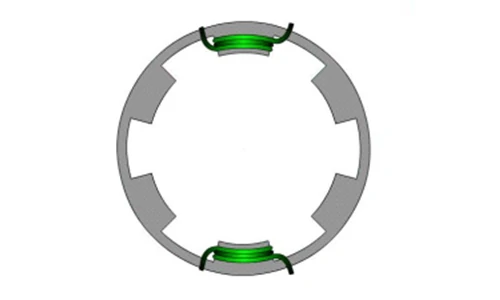Structural composition
The permanent magnet synchronous motor is mainly composed of a stator, a rotor, a base, an end cover, a bearing and a resolver. The stator mainly includes an iron core, a copper wire winding and a temperature sensor; the rotor mainly includes a rotor core, a permanent magnet, a rotating shaft and a rotor pressure plate.

Working principle
The three-phase symmetrical alternating current is connected to the three-phase winding of the motor stator to generate a rotating magnetic field.
According to the principle that opposite poles attract and like poles repel, regardless of the initial relative position of the stator rotating poles and the permanent magnet poles, the stator rotating poles will always drag the rotor to rotate synchronously due to the magnetic force.
Characteristics of permanent magnet synchronous motor
(1) Small size, light weight, high power density
(2) High efficiency and wide high efficiency range
(3) Wide constant power range
(4) High safety and comfort
(5) Effective energy recovery

The drive motor is controlled and operated by the drive motor controller according to the requirements of the vehicle controller. The rated power, peak torque and peak speed of the drive motor can be preliminarily determined from the vehicle parameters, and the motor can be preliminarily selected.
New energy permanent magnet synchronous motors generally use the S9 working system (non-periodic load and cycle change working system). In the actual vehicle development process, considering the cost, time, stability and other aspects, the drive motors with verified performance are selected first.
Basic parameters
1. Rated power
(1) During normal driving, the car is mainly subjected to air resistance, rolling resistance, acceleration resistance and ramp resistance. The drive motor should meet the driving force requirements of the vehicle under various driving conditions.
(2) The rated power of the drive motor needs to meet the maximum power requirement for sustainable driving of the vehicle. When the vehicle speed reaches the maximum tart speed, the rated power required at this time is the maximum rated power requirement.
2. Peak speed
The maximum speed of the drive motor needs to be higher than the maximum target vehicle speed requirement.
3. Peak torque
Under the entire driving condition, the driving force required by the car in acceleration and climbing is the largest.


